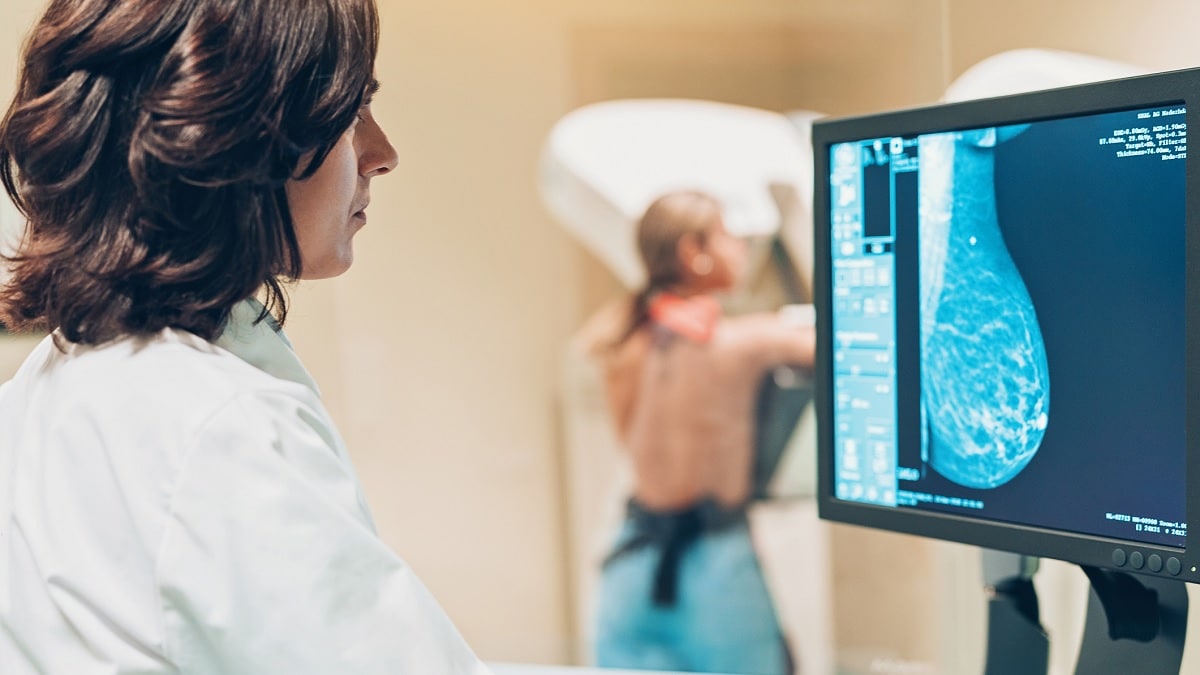Key points
- Breast cancer screening can help find breast cancer early, when it is easier to treat.
- The US Preventive Services Task Force recommends that women who are 40 to 74 years old and are at average risk for breast cancer get a mammogram every 2 years.
Overview

Breast cancer screening means checking a woman's breasts for cancer before there are signs or symptoms of the disease. Your health care provider can tell you about the best screening options for you. When you are told about the benefits and risks of screening and decide with your health care provider whether screening is right for you—and if so, when to have it—this is called informed and shared decision-making.
Although breast cancer screening cannot prevent breast cancer, it can help find breast cancer early, when it is easier to treat. Talk to your doctor about which breast cancer screening tests are right for you, and when you should have them.
Screening recommendations
The US Preventive Services Task Force is an organization made up of doctors and disease experts who look at research on the best way to prevent diseases and make recommendations on how doctors can help patients avoid diseases or find them early.
The Task Force recommends that women who are 40 to 74 years old and are at average risk for breast cancer get a mammogram every 2 years. Women should weigh the benefits and risks of screening tests (see below). Different screening recommendations may be used for women at higher than average risk.
Types of tests
Mammogram
A mammogram is an x-ray of the breast. For many women, mammograms are the best way to find breast cancer early, when it is easier to treat. Mammograms can find cancer before it is big enough to feel or cause symptoms. Having regular mammograms can lower the risk of dying from breast cancer. At this time, a mammogram is the best way to find breast cancer for most women of screening age.
Breast magnetic resonance imaging (MRI)
A breast MRI uses magnets and radio waves to take pictures of the breast. Breast MRI is used along with mammograms to screen women who are at high risk for getting breast cancer. Because breast MRIs may appear abnormal even when there is no cancer, they are not used for women at average risk.
Other exams
- Clinical breast exam: A clinical breast exam is an examination by a doctor or nurse, who uses his or her hands to feel for lumps or other changes.
- Breast self-awareness: Being familiar with how your breasts look and feel can help you notice symptoms such as lumps, pain, or changes in size that may be of concern. These could include changes found during a breast self-exam. You should report any changes that you notice to your doctor or health care provider.
Having a clinical breast exam or doing a breast self-exam has not been found to lower the risk of dying from breast cancer.
Benefits and risks of screening
Every screening test has benefits and risks, which is why it's important to talk to your doctor before getting any screening test, like a mammogram.
Benefit of screening
The benefit of screening is finding cancer early, when it's easier to treat.
Risks of screening
Harms can include false positive test results, when a doctor sees something that looks like cancer but is not. This can lead to more tests, which can be expensive, invasive, and time-consuming, and may cause anxiety.
Tests also can lead to overdiagnosis, when doctors find a cancer that would not have gone on to cause symptoms or problems, or even may go away on its own. Treatment of these cancers is called overtreatment. Overtreatment can include treatments recommended for breast cancer, such as surgery or radiation therapy. These can cause unnecessary and unwanted side effects. Other potential harms from breast cancer screening include pain during procedures and radiation exposure from the mammogram test itself. While the amount of radiation in a mammogram is small, there may be risks with having repeated x-rays.
Mammograms may also miss some cancers, called false negative test results, which may delay finding a cancer and getting treatment.
Where can I go to get screened?
You can get screened for breast cancer at a clinic, hospital, or doctor's office. If you want to be screened for breast cancer, call your doctor's office. They can help you schedule an appointment.
Most health insurance plans are required to cover screening mammograms every 1 to 2 years for women beginning at age 40 with no out-of-pocket cost (like a co-pay, deductible, or co-insurance).
